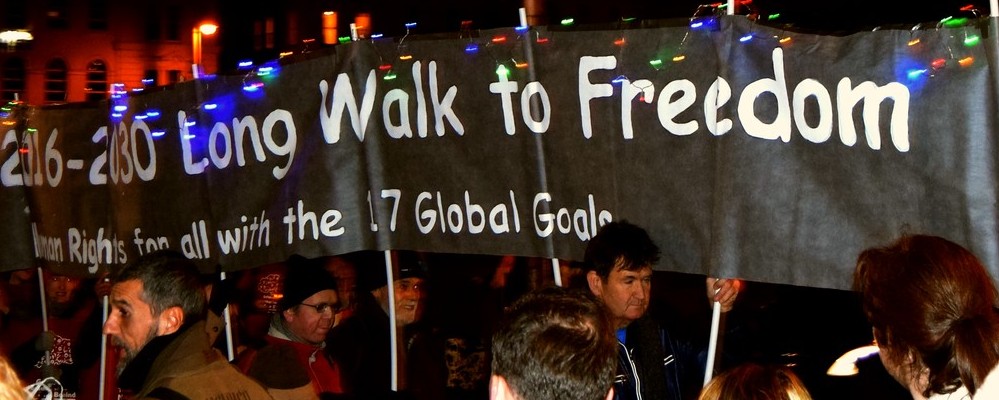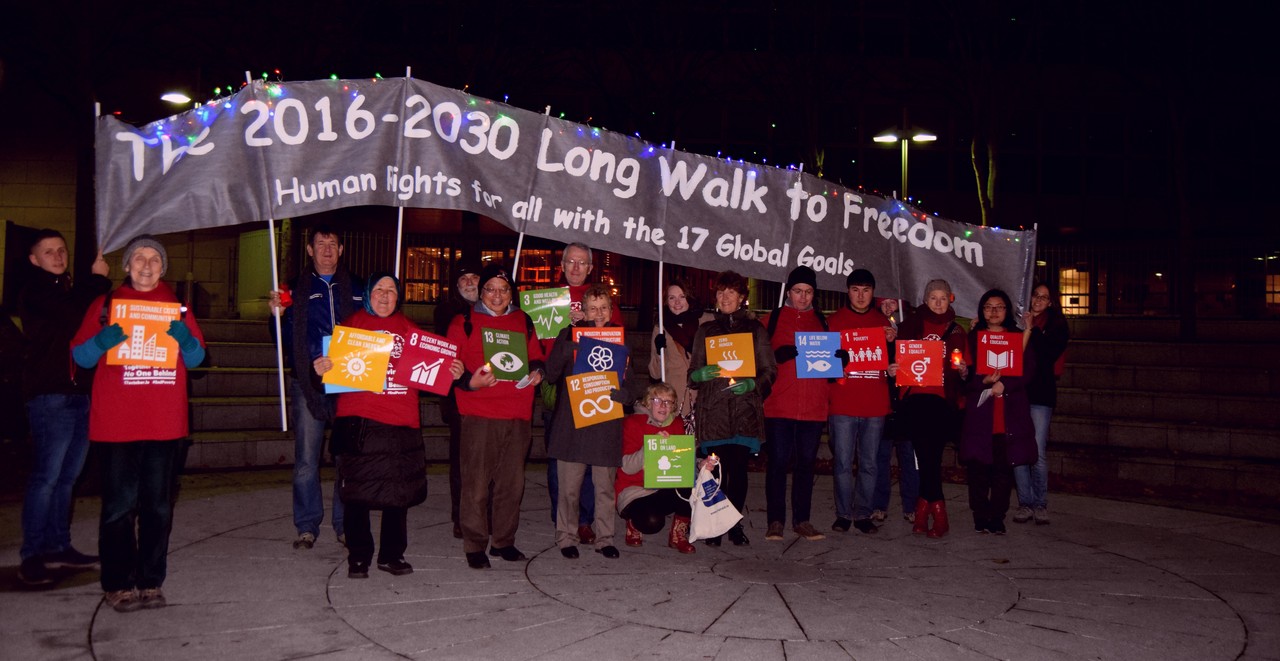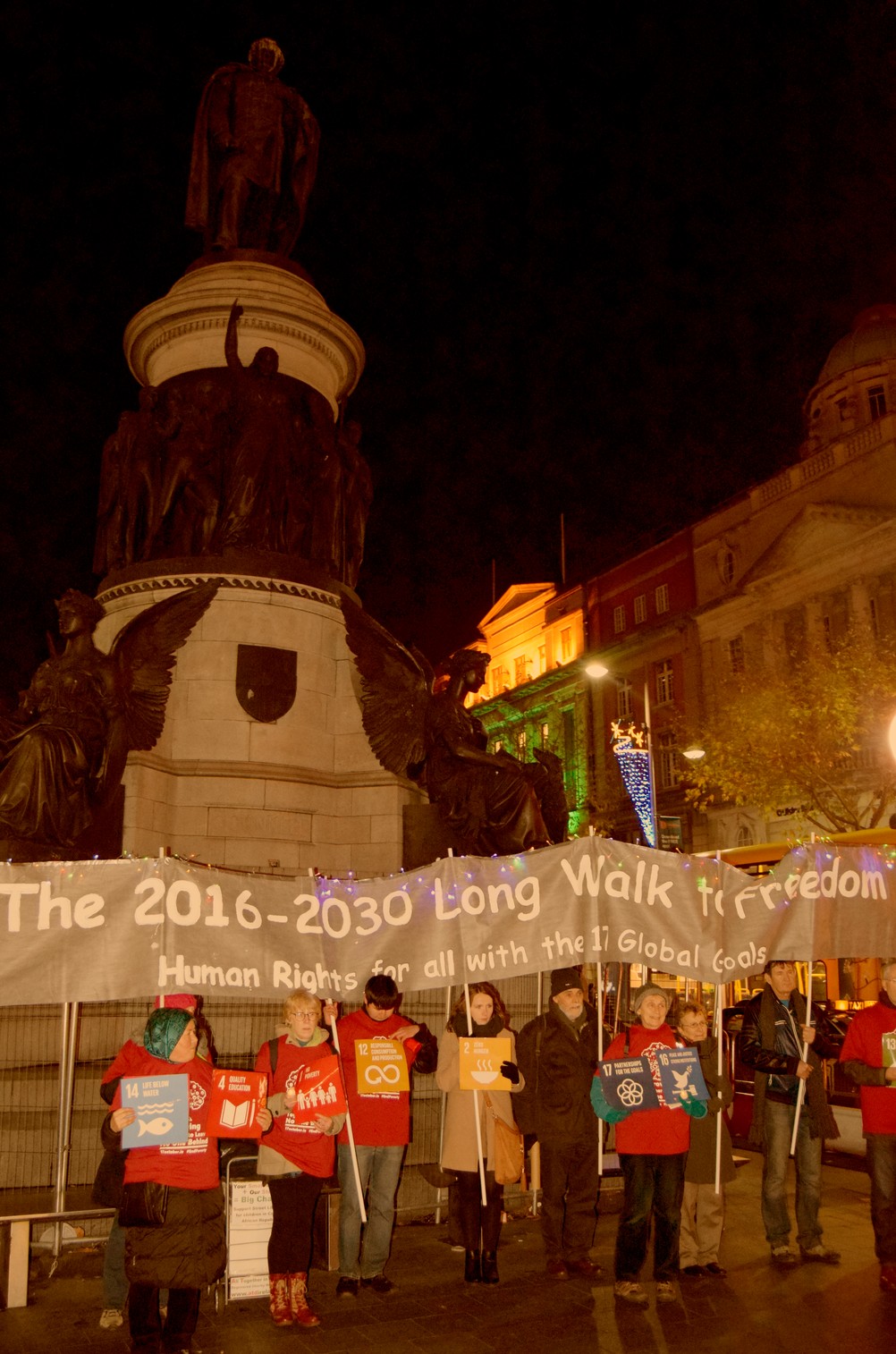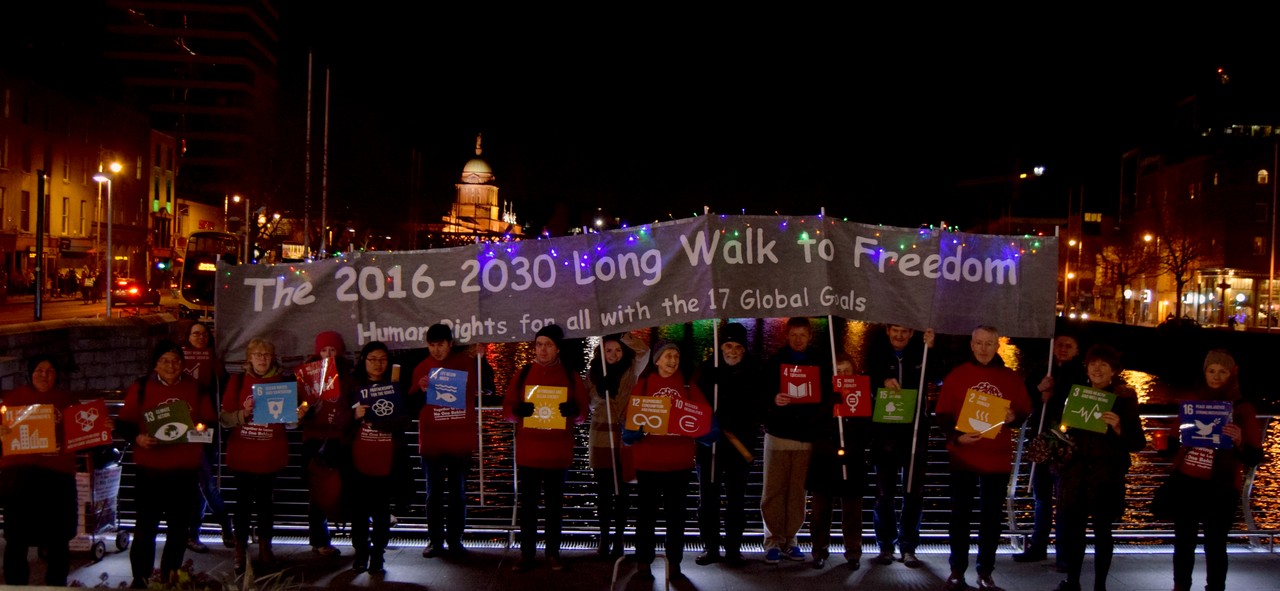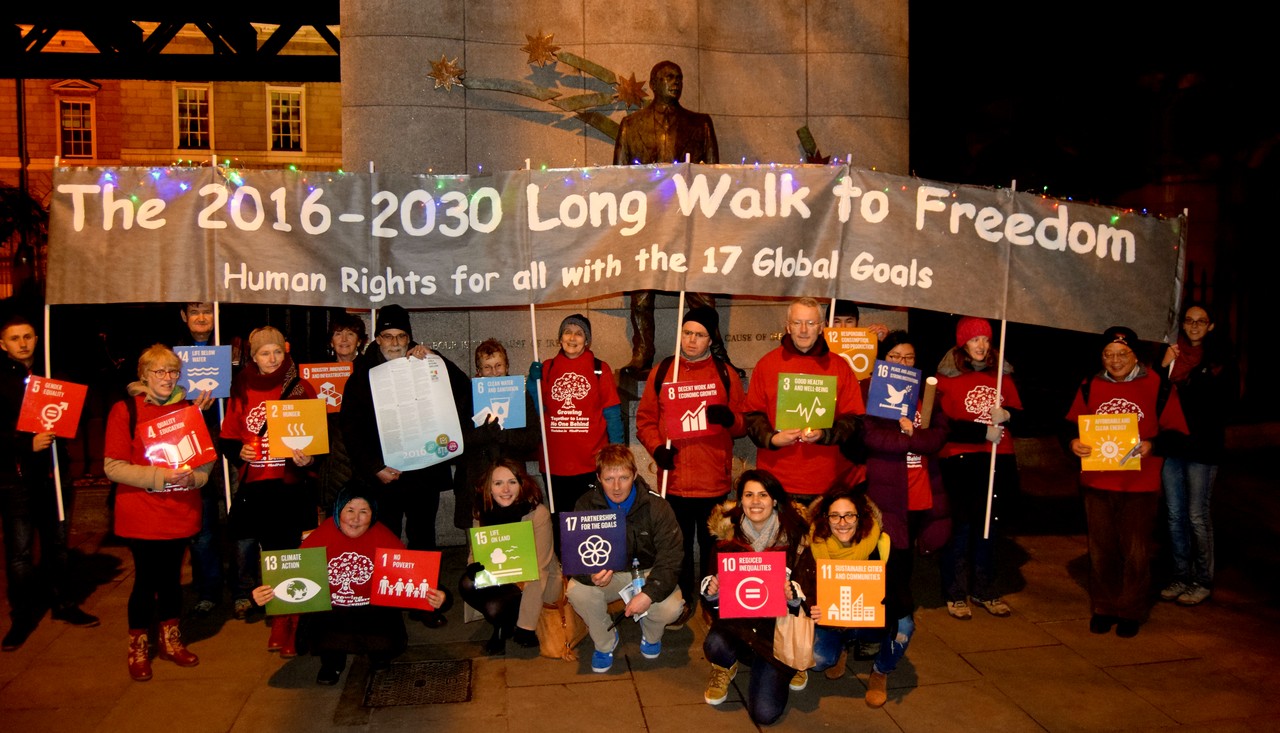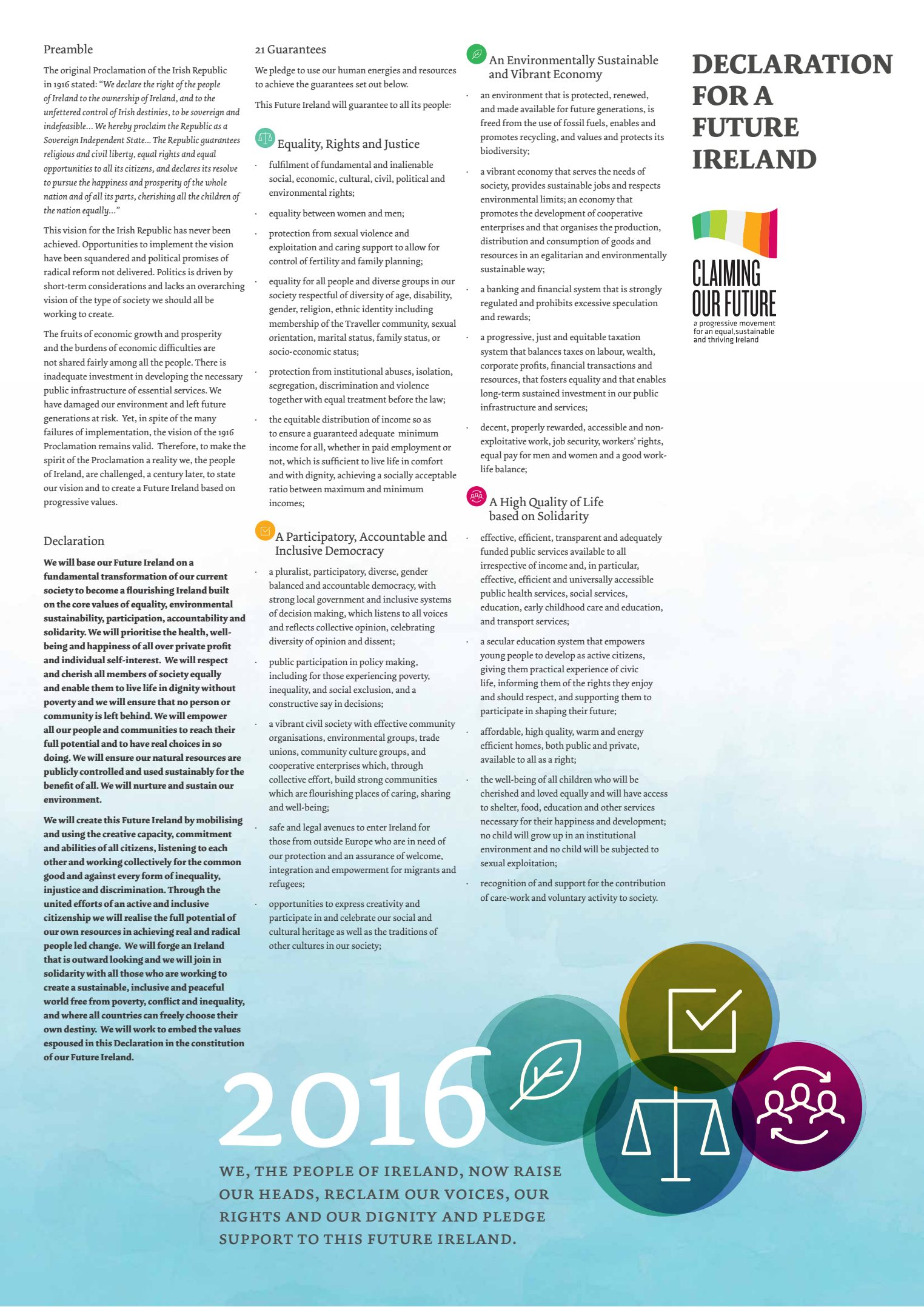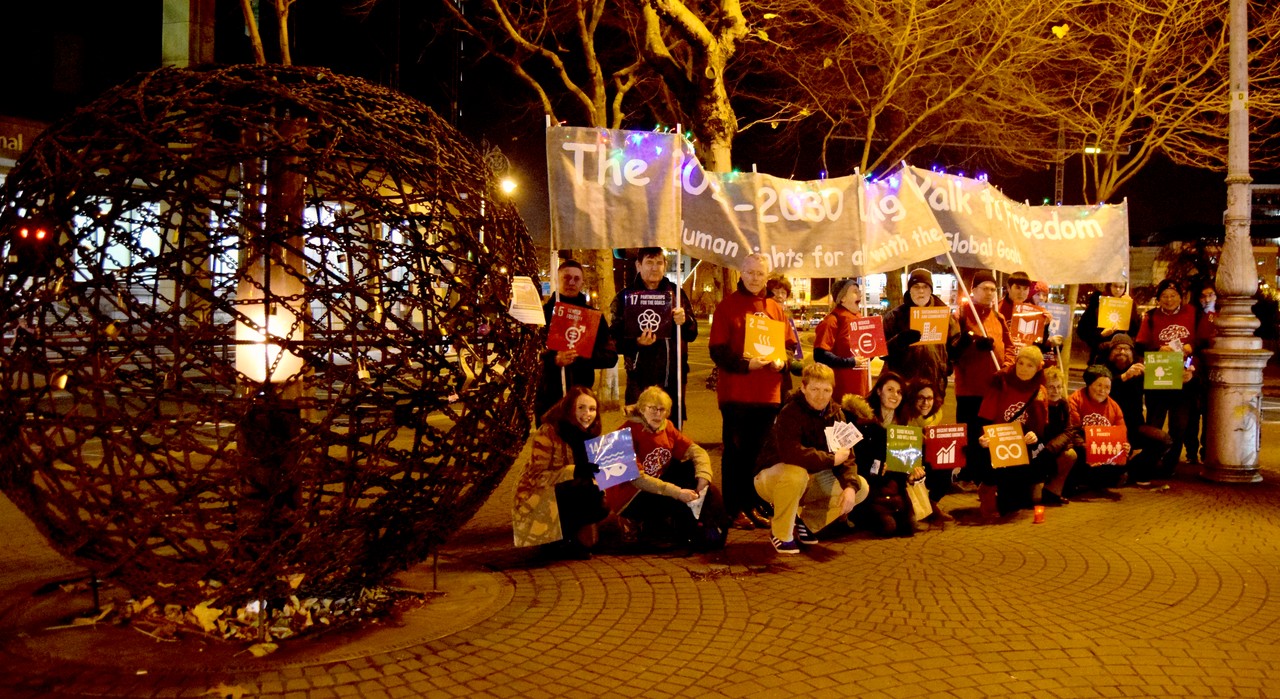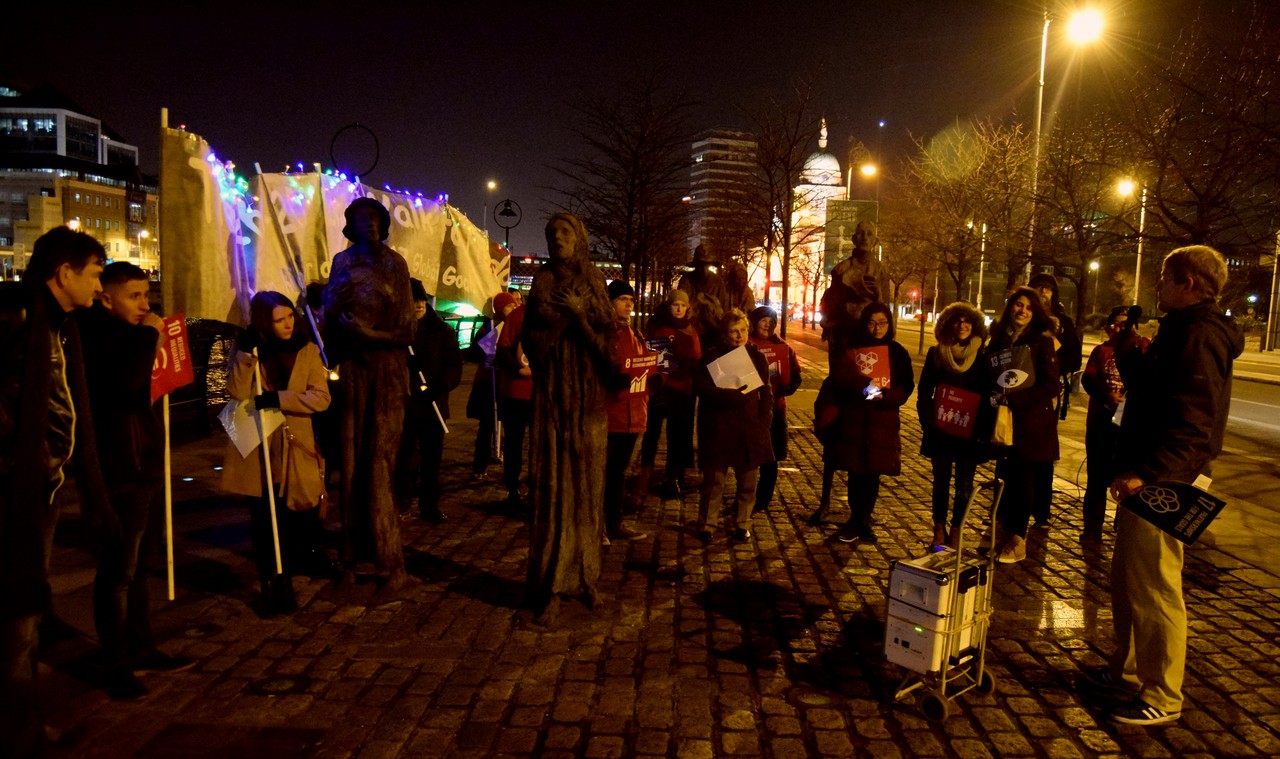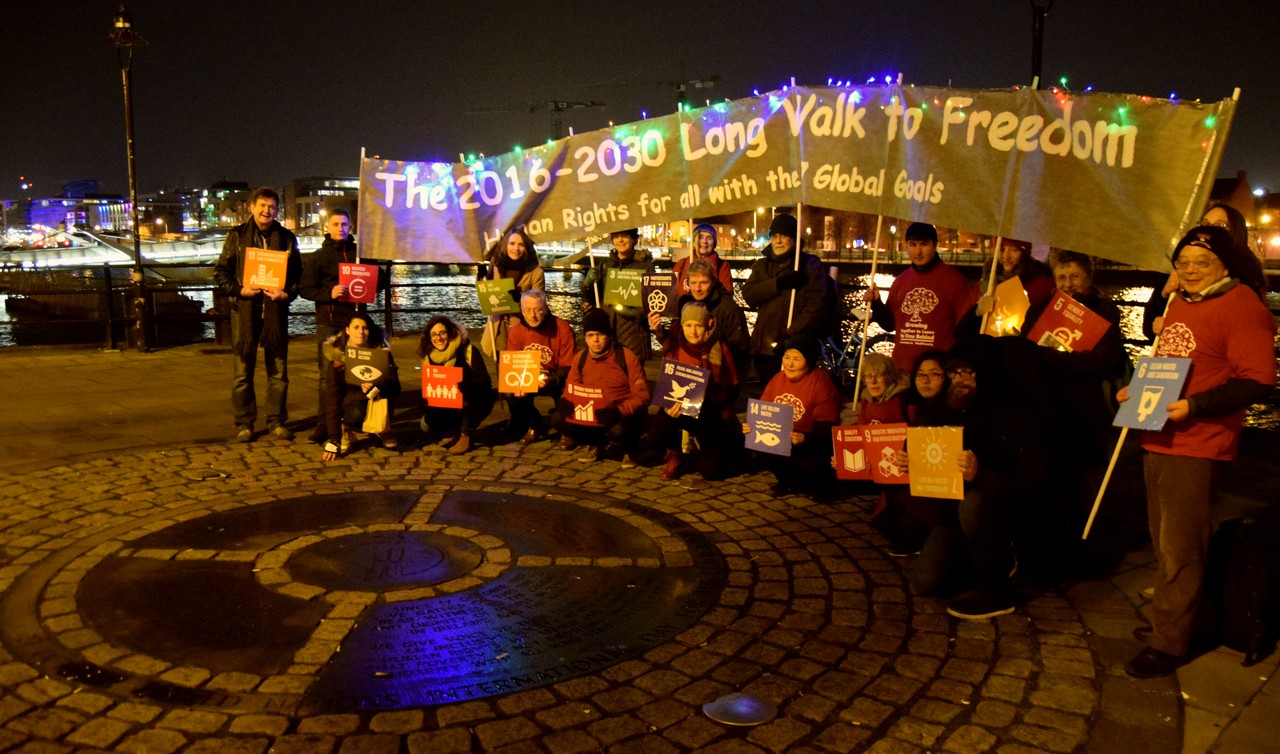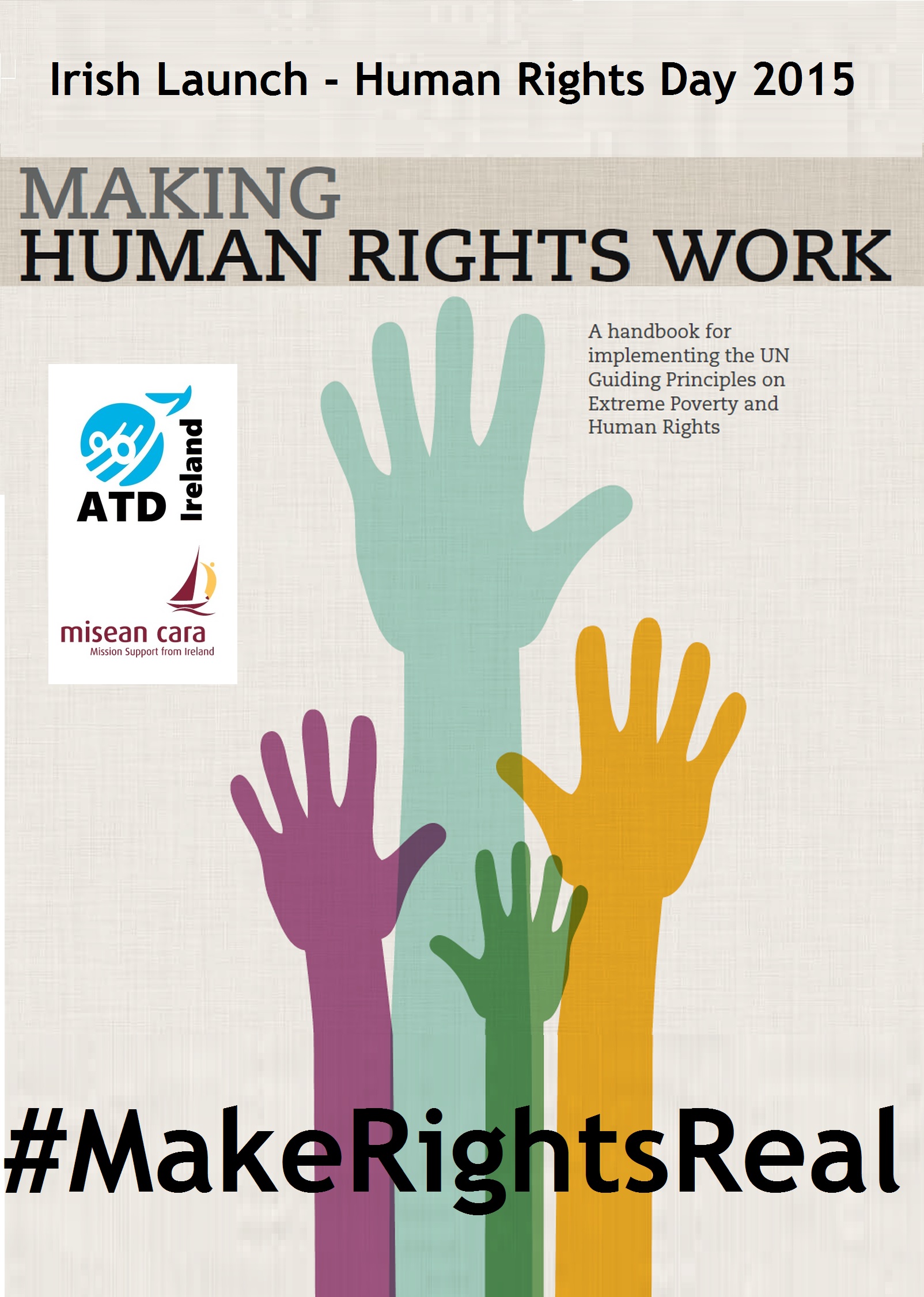The 15 year journey to achieve the Sustainable Development Goals are a long journey to free all human beings“from the fear of terror and the fear of want”.
On Human Rights Day 2016, All Together in Dignity Ireland invited citizens of all walks of life to meet for the second symbolic “Long Walk to Freedom “, second of a series of 16 walks which take place each year from 2015 to 2030.
The now 14 years’ journey to achieve the 17 Sustainable Development Goals (SDGs) of the 2030 United Nations Agenda is a long journey to free all human beings “from the fear of terror and the fear of want”.
As the citizens who walked on the 10th December, the defenders of Human Rights will always be walking on a long walk to freedom, as “nobody is free until we are all free!”. The 2030 Agenda is for sure part of the legacy of Nelson Mandela and many other Human Rights Heroes!
The Candlelit Walk lasted one hour beginning at 6:45pm when participants met at the Civic Offices Amphitheatre on Wood Quay. This is a symbolic place as it represents the typical greek area of citizens debate, which is the very foundation of democracy and human rights.
The route of the walk stopped at six significative places in Dublin 1:
The Statue of Daniel O Connell – often referred to as The Liberator or The Emancipator, Daniel O Connell was a political leader of the 19th Century who campaigned for the rights and freedom of the Irish under British Rule. At this stop, participants hold symbols of the 17 Golbal Goals, the main current “Liberation and Emancipation Agenda”.
The Rosie Hackett Bridge – as a trade unionist and a rising revolutionary, Rosie Hackett campaigned for workers’ rights through the 1913 Lockout and went on to be a key figure in the rising. At this stop, participants will promote the important gender equality targets of the 2030 Agenda.
The Statue of James Connolly – the Irish Republican and socialist leader James Connolly was executed by the British for the role he played in the 1916 Rising. His role in the Rising and in the drafting of the 1916 Proclamation, his execution are considered to be some of the influencing factors in the fight for Irish freedom in the 20th Century . At this stop, Hugh Frazer presented the “2016 Declaration for a Future Ireland ” prepared by many Irish citizens gathered by “Claiming our Future”. For Hugh Frazer, the 2016 Declaration includes most of the challenges set by the 2030 Agenda and could be considered as an Irish version of the UN agreement adopted in September 2015.
The Universal Links on Human Rights Sculpture – commissioned by Amnesty International in 1995, the sculpture represents the jails around the world holding prisoners of conscience. At this stop, members of the Irish ESC Rights Initiative participants addressed the “indivisibility of Human Rights” to keep the message of the Irish Constitutional Convention on Economic, Social and Cultural Rights alive.
Famine Statues – these statues commemorate the Great Famine of the 19th Century where 1million people died and more than a million emigrated from Ireland. At this stop, members of the Community Platform promoted “Six principles for an inclusive, equal and effective health policy” launched on Human Rights Day.
The walk will end at The Human Rights and Poverty Stone. This Stone was inaugurated in 2008, on the UN Day for the Eradication of Poverty and bears the Human Rights pledge of Joseph Wresinski (1917-1988). At this final stop, particiants will promote the 2012 UN Guiding Principles on Extreme Poverty and Human Rights, a Human Rights work fit for the 2030 Agenda! On Human Rights Day 2015 ATD launched the handbook “Make Human Rights Work” to help everyone take action for human rights. This handbook translates a set of United Nations (UN) principles on human rights and poverty situations into action points that we all can use to affect change. “We want to help people working at the local level to better understand the human rights implications for people living in extreme poverty and to propose a series of affirmative actions to claim their rights.” says ATD International’s Vice-President Janet Nelson. “We feel that the approach set out by the handbook is vitally important if we are to make real progress on Goal Number One of the new Sustainable Development Goals recently adopted by the UN in New York: ‘End poverty in all of its forms everywhere.’”
2016 International Human Rights Day: the UN theme
Human Rights Day is observed every year on 10 December. It commemorates the day on which, in 1948, the United Nations General Assembly adopted the Universal Declaration of Human Rights. This year, Human Rights Day called on everyone to stand up for someone’s rights! Many of us are fearful about the way the world is heading. Disrespect for basic human rights continues to be wide-spread in all parts of the globe. Extremist movements subject people to horrific violence. Messages of intolerance and hatred prey on our fears. Humane values are under attack. We must reaffirm our common humanity. Wherever we are, we can make a real difference. In the street, in school, at work, in public transport; in the voting booth, on social media. (www.un.org/en/events/humanrightsday/)

